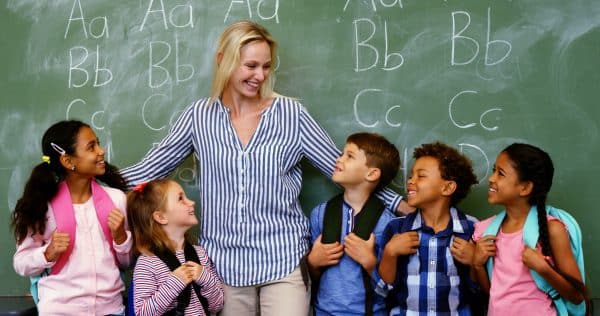
Creating a strong sense of community within a classroom is crucial for fostering a positive learning environment. When students feel connected to one another, they are more likely to participate, collaborate, and support each other’s learning journeys. Here are several innovative ways to help students engage with each other and build meaningful relationships.
1. Icebreaker Activities
Two Truths and a Lie
This classic icebreaker allows students to share fun facts about themselves while trying to guess which statement is false. It’s a great way to learn interesting things about classmates and encourage conversation.
Human Bingo
Create bingo cards with prompts such as “has a pet,” “plays a musical instrument,” or “has traveled to another country.” Students mingle to find classmates who match the prompts, fostering interaction and discovery of common interests.
2. Group Projects and Collaborative Learning
Peer Teaching
Pair students together and have them teach each other about a topic they are passionate about. This not only helps students learn from each other but also builds a sense of mutual respect and understanding.
Collaborative Art Projects
Encourage students to work together on a mural, poster, or other art project that represents their shared interests or classroom goals. This hands-on activity promotes teamwork and creativity.
3. Social and Emotional Learning (SEL) Activities
Classroom Circles
Hold regular classroom circles where students can share their thoughts, feelings, and experiences. This practice creates a safe space for open communication and helps students develop empathy and active listening skills.
Emotion Charades
Incorporate games like emotion charades, where students act out different emotions and classmates guess what they are. This activity builds emotional intelligence and helps students understand and relate to each other’s feelings.
4. Technology-Enhanced Engagement
Online Discussion Boards
Set up discussion boards on platforms like Google Classroom or Edmodo where students can post about topics they are interested in. This allows shy students to engage in conversations in a low-pressure environment.
Virtual Pen Pals
Partner with a classroom from another school or country and have students correspond with virtual pen pals. This exposes them to different cultures and perspectives while building new friendships.
5. Extracurricular Activities and Clubs
Interest-Based Clubs
Encourage students to join or create clubs based on their hobbies and interests, such as a book club, coding club, or sports team. These groups provide opportunities for students to bond over shared passions.
Community Service Projects
Organize community service projects where students work together to help others. Volunteering fosters a sense of purpose and camaraderie as students collaborate to make a positive impact.
6. Interactive Classroom Games
Escape Rooms
Design classroom escape rooms where students must work together to solve puzzles and “escape” within a set time. This fun and challenging activity promotes problem-solving and teamwork.
Kahoot! Quizzes
Use Kahoot! to create interactive quizzes on various topics. Students can compete individually or in teams, making learning fun and fostering a healthy competitive spirit.
7. Creative Expression Opportunities
Show and Tell
Have regular show-and-tell sessions where students can share something meaningful to them, such as a hobby, a favorite book, or a family tradition. This helps students learn more about each other’s lives outside of school.
Student-Led Conferences
Allow students to lead conferences where they present their work and progress to the class. This builds confidence and allows classmates to appreciate each other’s achievements and efforts.
8. Physical Activities and Movement
Team-Building Games
Incorporate team-building games like relay races, scavenger hunts, or trust exercises during physical education classes or breaks. These activities encourage students to work together and support one another.
Mindfulness and Yoga
Introduce mindfulness and yoga sessions where students can relax and practice mindfulness together. This promotes a sense of peace and community within the classroom.
9. Culturally Responsive Activities
Cultural Showcases
Host cultural showcases where students can share aspects of their heritage, such as food, music, or traditions. This celebrates diversity and helps students appreciate different cultures.
Multilingual Storytime
If there are students who speak different languages, invite them to share stories or teach simple phrases in their native languages. This fosters an inclusive environment and highlights the value of linguistic diversity.
10. Reflection and Feedback Sessions
Weekly Reflection Circles
End each week with a reflection circle where students can discuss what they enjoyed, what they learned, and any challenges they faced. This practice builds self-awareness and group cohesion.
Feedback Buddies
Pair students as feedback buddies who regularly provide constructive feedback on each other’s work. This encourages a growth mindset and strengthens peer relationships.
Building a sense of community and fostering connections among students is essential for a thriving classroom environment. By incorporating a variety of engaging activities, teachers can create opportunities for students to learn about each other, collaborate, and build lasting friendships. Implementing these strategies not only enhances the learning experience but also helps students develop important social skills that will benefit them throughout their lives.
